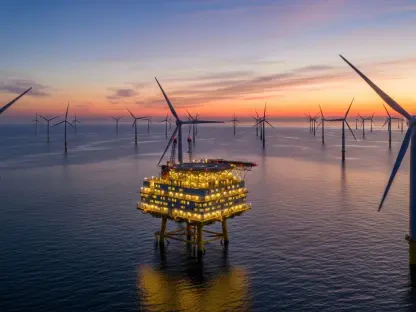The village of Anwick in Lincolnshire, traditionally a quiet and tranquil community, has found itself at the center of a contentious debate. The proposed construction of a biogas plant by Stream BioEnergy UK has ignited a wave of opposition among residents, highlighting a classic environmental versus development clash. Concerns about traffic congestion, odor, and noise pollution, as well as potential environmental risks and changes to the village’s visual character, have mobilized the community in strong opposition.
Resident Concerns Reach Boiling Point
Traffic and Safety Issues
One of the primary concerns for Anwick’s residents centers around the anticipated increase in heavy traffic. The proposed biogas plant would necessitate the transportation of poultry manure and other organic wastes from locations as far as 60 miles away. This would likely lead to a significant increase in the number of large trucks moving through the village. Local residents express fears that this surge in traffic would exacerbate road congestion, making daily commutes more troublesome and extending travel times. Moreover, the sheer volume of heavy vehicles raises serious safety concerns for both drivers and pedestrians, potentially increasing the number of accidents and incidents on local roads.
The community’s apprehensions also extend to the potential wear and tear on village infrastructure. Increased heavy vehicle movement could lead to deteriorating road conditions, requiring frequent maintenance and repairs. This escalation in road usage is seen as a tangible threat to the generally peaceful rural environment that Anwick residents cherish. With the trucks potentially rumbling through narrow village streets and passing schools, safety concerns become even more pronounced, especially during morning and afternoon peak times.
Odor and Noise Pollution
Another hot-button issue among residents is the potential for unpleasant smells emanating from the anaerobic digestion process. Biogas plants commonly use this method to break down organic materials, which can often produce foul odors. There is widespread worry that these smells could permeate the village, severely impacting outdoor activities and residents’ overall quality of life. In a community that greatly values its clean and fresh rural air, the prospect of living with persistent odors is particularly distressing. Residents are concerned that these odors would be inescapable, affecting everyday life, outdoor gatherings, and the general ambiance of the village.
In addition to odor concerns, the noise from plant operations stands to disrupt Anwick’s quiet, rural atmosphere. The constant hum of machinery and the sounds of trucks arriving and departing could contribute to a significant noise pollution issue. Given the village’s small size and current tranquility, even moderate levels of industrial noise could be highly intrusive. Residents voice their fears that such noise would disrupt sleep, reduce the enjoyment of outdoor spaces, and overall detract from the peaceful environment that defines Anwick.
Environmental and Visual Impact
Potential Environmental Risks
The potential environmental risks associated with the biogas plant are of serious concern to Anwick’s residents. One of the critical issues involves the possible pollution of the nearby River Slea. Given the biogas process’s heavy reliance on various organic materials, any accidental spills or leaks could pose a significant threat to the river’s ecosystem. Pollution of the waterway might not only affect local wildlife but also have broader implications for the region’s agricultural activities that rely on clean water sources.
Moreover, residents have voiced concerns about the history of explosions linked to biogas plants. While relatively rare, such incidents highlight the inherent risks associated with handling large quantities of gas produced through anaerobic digestion. The safety risks perceived by the community are compounded by worries about the long-term environmental implications of the plant’s operation. Concerns over air quality, potential soil contamination, and the overall ecological footprint of the facility play into the larger narrative of environmental preservation and rural sustainability.
Industrial Aesthetic Concerns
Another significant issue is the project’s visual impact, with the plant set to rival the size of notable local landmarks like the Anwick Parish Church. The sheer scale of the biogas facility raises fears about the village’s aesthetic degradation. The charming, picturesque landscapes that characterize Anwick could be overshadowed by the industrial structure, altering the village’s rural charm and affecting its appeal to residents and visitors alike.
Concerns about industrial aesthetics extend beyond mere visuals; they encompass the perceived threat of the village turning predominantly industrial. Many residents worry that the introduction of such a large-scale industrial facility could pave the way for further industrial developments, leading to a loss of Anwick’s rural character. This fear is palpable among villagers who moved to Anwick specifically for its quiet, agricultural environment. For them, the biogas plant represents a shift towards industrialization that is at odds with the community values and lifestyle they hold dear.
Developer’s Vision and Reassurances
Economic and Employment Benefits
Stream BioEnergy UK envisions substantial economic benefits from the proposed biogas plant, positioning the project as a significant boost to the local economy. The project promises to create 100 construction jobs during its development phase, along with 30 permanent roles once operational. This influx of employment opportunities is especially appealing given the limited job market in many rural areas. Stream BioEnergy UK’s investment of approximately £115 million is also seen as a substantial economic boon, potentially spurring further local business activities and investment.
From the developer’s perspective, the biogas plant is positioned as a vital contributor to the green energy sector, aligning with broader regional and national goals for sustainable energy production. The production of renewable energy through the conversion of organic waste into biomethane supports local agri-food sectors and promotes sustainable farming practices. The envisaged benefits extend beyond economic gains, integrating the project into a broader narrative of environmental conservation and green energy advancement that proponents argue will ultimately benefit the community and the environment.
Environmental Safeguards and Traffic Mitigation
In response to the environmental concerns raised by residents, Stream BioEnergy UK has proposed several safeguards to address these issues. Plans for robust odor control systems aim to mitigate the foul smells typically associated with biogas processes. These controls are designed to ensure that emitted odors are within acceptable levels, reducing the impact on the village. Similarly, sound-proofing measures are planned for noise-generating equipment to limit the disruption caused by plant operations.
Additionally, recognizing the traffic concerns voiced by Anwick residents, the company has modified its original plans to include new access routes that would reduce transportation through the village. This adjustment demonstrates a willingness to incorporate resident feedback and minimize disruptions caused by increased truck movements. By addressing these primary concerns—traffic, odor, and noise pollution—Stream BioEnergy UK aims to position the project as a harmonious addition to the community rather than a disruptive force.
Promoting Balance in Sustainable Development
The village of Anwick in Lincolnshire, typically known for its peace and quiet, has become embroiled in a heated debate. Stream BioEnergy UK’s plan to build a biogas plant has sparked significant opposition among locals, illustrating a classic conflict between environmental preservation and development. Many residents are worried about increased traffic congestion, unpleasant odors, and noise pollution that such a plant might bring. They also fear potential environmental risks and changes to the village’s picturesque landscape. These concerns have united the community in strong opposition to the project. The proposal has served as a catalyst for widespread discussions, drawing attention not only to immediate local issues but also to broader debates about sustainable development, community rights, and the environmental impact of industrial projects. The situation in Anwick underscores the complexities and challenges communities face when balancing growth and preserving their unique character.









